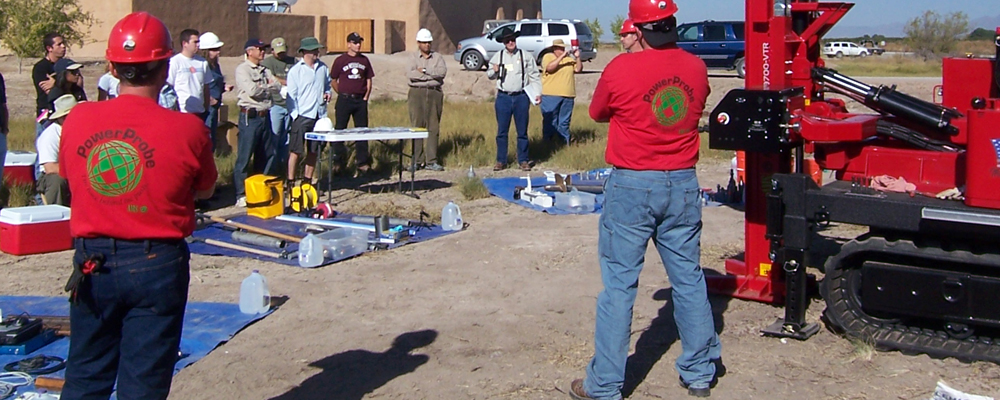| Price (With Option for Professional Certification, Includes Course Study Guide and Certification Exam Fees): | $1695.00 Log In to Your E-School Account to Register |
| Price (Without Option for Professional Certification): | $1495.00 Log In To Your E-School Account to Register |
| Total CEUs for This E-Course: 19.1 Modules Included in This E-Course |
|
Collection of soil samples for physical and chemical analysis is a critical component of environmental investigations at many sites, ranging from service stations and drycleaners to landfills and Superfund sites. Traditional soil sample collection and handling methods are subject to significant sources of error and bias that commonly result in compromise of physical characteristics of soils, as wells as gross underestimation of chemical concentrations in soil for a wide range of analytes. Given the magnitude of the decisions that are made based on these data, the technical and economic impacts of using traditional sampling methods can be significant.
This 17-module E-Course covers the topic of soil sampling comprehensively. The first 5 modules of the course set the stage for the remainder of the course by covering preparation of effective sampling and analysis plans for soil; common strategies implemented for sampling soil; field equipment decontamination procedures; and implementation of field quality assurance/quality control protocols to ensure both precision and accuracy in soil sampling events. Field video segments are included for the last two modules.
Modules 6, 7 and 8 cover the science behind soil sampling, with a focus on developing an understanding of the physical and chemical properties of soil samples, how samples should be collected and handled to preserve these properties, how traditional sampling methods can result in significant sources of error in field and lab analyses, and how more up-to-date sampling methods provide much higher confidence in sample analytical results. Also addressed are the limitations of conventional site characterization approaches, the economic and technical advantages of using accelerated/expedited site characterization, and how to determine how many soil borings and samples are enough to satisfy site-specific sampling program objectives.
Modules 9 through 17 cover selection and use of a variety of soil sampling equipment (from hand augers and push-tubes to direct-push and sonic drilling, including numerous ASTM standards on soil sample collection methods); use of US EPA Method 5035B for soil sample collection and preservation for volatile organic compounds; field sample analytical methods for soil samples (including use of immunoassay, analyte-specific field kits, X-Ray fluorescence and field-portable gas chromatographs); soil sample description and handling in the field; soil sample handling and shipment; and documentation of soil sampling events to ensure defensibility of data.
In the field video portions of these modules, students learn how to properly clean soil sampling equipment; how to collect quality control samples; how to collect soil samples for site characterization purposes using direct-push, hollow-stem auger and sonic drilling methods; how to describe and handle soil samples in the field; how to properly package soil samples for shipment to the lab; how to use several methods for field analysis of soil samples; and how to correctly use the volumetric sampling methods and chemical preservation methods required by U.S. EPA Method 5035B for collection and preservation of soil samples for VOC analysis.
Students will be able to immediately apply information provided in this course to field projects where VOCs, SVOCs, trace metals and other analytes are of concern and, in doing so, should significantly improve the quality of data generated during soil investigations so sound decisions can be made in a cost-effective manner.
Modules Included in This E-Course











